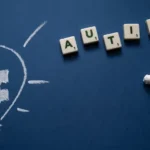When talking about clean water, there needs to be a certain level of cleanness that is safe enough for human use. It was estimated back in June 2019 that 758 million people don’t have enough basic water-drinking service, including 144 million who depend on surface water.
These statistics are alarming for anyone, which is why clean water is a necessity for anyone to survive. If you happen to be living in India, there are many water testing laboratories you can rely on to ensure the water you are using is safe.
Please do not rely on word of mouth that the faucet water you’re using is clean because you will never know unless experts have tested it. No matter where you go, using clean water is always the best option.
Click here – Here is How Kratom Powder Beautifies Your Skin?
Common Harmful Contaminants in Water
There are many harmful water contaminants found in water, depending on where it has been sitting. Water will always be contaminated if left stagnant in a dirty area.
Even the water system that commercial buildings have can never be trusted unless they are properly tested. And if you want to know more about water testing, you should also know the various harmful contaminants found in water.
A common water contaminant you need to know about is lead. It is a toxic metal that can cause serious damage to a person’s health, even if it is present in the water supply in low dosages. Lead can contaminate the water through corroded plumbing systems and erosion of natural deposits.
The areas mentioned contribute to lead pollution in public drinking water. The lead dosage also depends on how long the water has been exposed to the amount of corrosion in pipes, the temperature, and the acidity of the water.
One other common water contaminant is chloramine. It is formed when ammonia is added to water that has free chlorine. This type of water contaminant is usually added as a secondary disinfectant.
When chlorine and chloramine are combined with naturally occurring materials in water, they form disinfectant byproducts (DBP’s). It has been known to cause cancer in several laboratory tests.
Since chloramine was mentioned, you shouldn’t forget about chlorine. It is a powerful oxidant mixed in with the water by many water systems to keep the microbes in check. You can absorb chlorine through physical consumption and even through your skin when taking a bath.
It can also severely dry the hair and skin and irritate your eyes and nose. You might have experienced this sensation when swimming in a pool since pools use chlorine to clean out the water. Although safe when unconsciously ingested, a normal person should never ingest too much of it.
One other contaminant of water is Volatile Organic Compounds (VOCs). It includes several chemicals emitted as gas, and thousands of products contain the contaminant. You’ll be surprised that some elements of it get mixed into your drinking water.
When you heat and vaporize water, the body can absorb the contaminants. Pesticides should never be removed from the list of water contaminants. Pesticides can travel through sewers that run from the drains within the building, carrying wastewater to several treatment plants where they do not get treated during the detoxifying process.
You can find hundreds of compounds with only a few studies and tests made on how the contaminant can impact the public’s health.
Click here – Relaxed Fit Socks: 8 Elements the Right Socks Must Have
Simple Steps to Keep Water Clean
Whether it’s at home or the office, people can perform simple tasks to help preserve clean water. You might not realize that these seemingly ineffective tasks actually helps the water stay clean. The most well-known method to preserve clean water is to reduce water use.
Lowering water usage will help water supply maintain its cleanliness by lessening chemicals used in treatment. It also keeps available water in aquifers, for instance, when people need it, ensuring that excess water won’t be drained from the ecosystem.
Another simple method for keeping water clean is not to use your toilet as a trash can. The issue can be found in most public bathrooms. Even though there is a trash can beside the toilet, people would still throw their used tissue into the toilet.
Flushing non-biodegradable products should never become a practice as it can cause the drainage system to get clogged up. It also hinders the sewage treatment process and ends up being discarded into large bodies of water.
Whether water is used for washing hands, cooking, or drinking, make sure it is completely safe by doing the water testing process.






